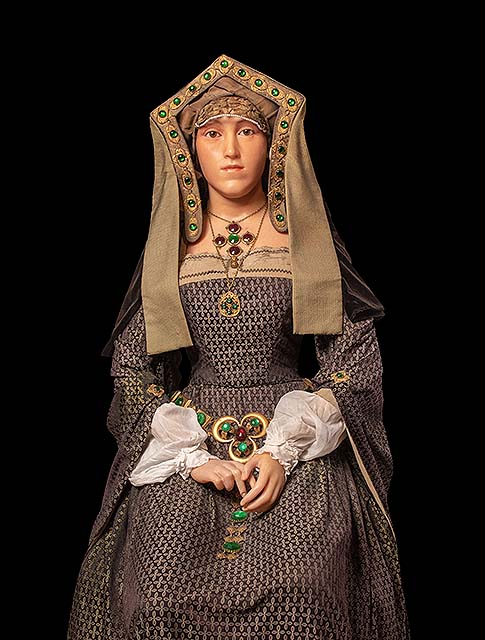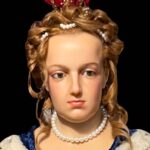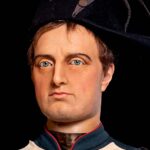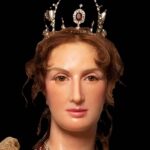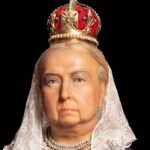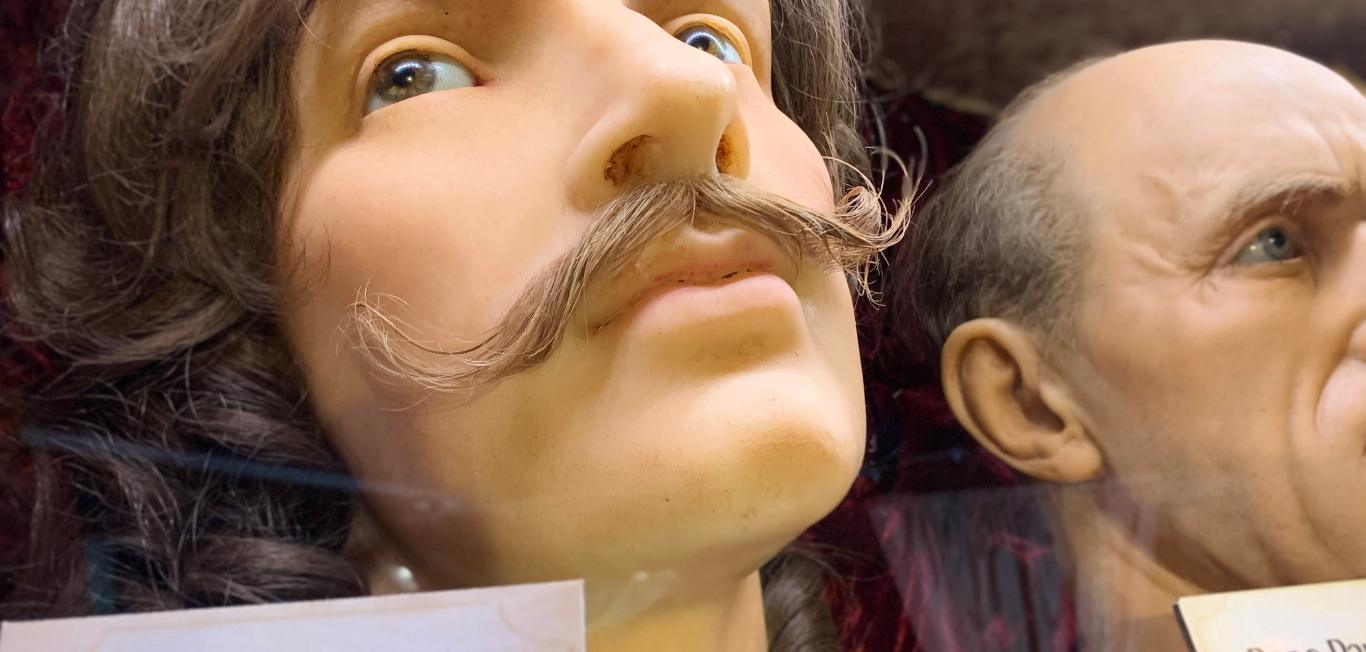Who Was Catherine of Aragon?
Catherine of Aragon is an interesting historical figure depicting strength, resilience, and royal importance. She was born into an illustrious Spanish royal family. Catherine of Aragon embarked on a journey of destiny that tangled with the English royal family and left a permanent mark on the Tudor era. A life filled with romance, tragedy, and rigid determination, she piloted through the intricate corridors of power and love at the heart of European courts from her early engagement to Arthur, Prince of Wales, to her emotional role as King Henry VIII’s first wife.
Catherine of Aragon’s story is a mixture of joy and sorrow. Her story, which was to eventually alter the course of history, unfolded in an environment whereby political manipulation, religious extremism, and a search for a male heir dominated.
Catherine of Aragon’s influence as queen of England spread beyond her royal appearances through revolutionary accomplishments and permanent impact. Also, apart from her royal status, Catherine of Aragon’s spirit was well depicted through her education and unwavering commitment to her faith. As the first female ambassador in European history, she broke down barriers and established new ground in female diplomacy. Her legacy lives on through artistic depictions and her profound impact on women’s education and intellectual development.
DID YOU KNOW?
As the first female ambassador in European history, she broke down barriers and established new ground in female diplomacy.
Early Years and Personal Life
Catherine of Aragon’s journey includes a narrative of love, sorrow, and royal destiny, intricately entwining the roles of both Catherine of Aragon’s siblings and Catherine of Aragon’s children in the annals of history. Coming from the respected and honored Spanish royal family, Catherine of Aragon’s life was defined by a significant betrothal to Arthur, Prince of Wales. This was an alliance that was carefully cultivated since their formative years. Their union led to marriage in the mighty walls of Old St. Paul’s Cathedral on November 14, 1501. This was a fundamental moment that would later form the course of Catherine’s extraordinary life.
However, tragedy struck this early bond when Arthur’s duty led him to the Council of Wales and the Marches on the Welsh border. Escorted by Catherine, the journey took an unexpected turn for the worse as they both got ill, ultimately leading to Arthur’s demise. This distressing loss cast a long-lasting shadow on Catherine’s youth, permanently and unexpectedly affecting her life’s course. In the wake of these events, Catherine of Aragon’s path crossed with that of Henry VIII, her late husband’s younger brother. Their union was later formalized in a private ceremony at the church of the Observant Friars outside Greenwich Palace on June 11, 1509, marking a critical stage for both individuals. With Henry now rising to the title of King Henry VIII, with Catherine as his queen, their coronation on June 24, 1509, solidified her role on the grand stage of royalty.
Amid the luxury and the magnificence of the court, Catherine’s maternal ambitions were altered by painful pregnancies. Between 1510 and 1518, she embarked on the tumultuous journey of motherhood six times. However, she was unlucky while trying to conceive children. Only her daughter Mary I survived the precarious infancy period. This was a symbol of hope amid the trials of parenthood. Unfortunately, stillbirths and the brief lives of three sons engraved sad markers onto Catherine’s narrative. This ordeal tested her resilience within the challenging realm of royal responsibilities.
The ordeal further increased doubts about Catherine’s marital union with Henry VIII, and a misinterpretation of a biblical text also contributed. Henry’s belief that their marriage was cursed due to his union with Catherine, his sister-in-law, led to a confusing mystery. This insinuated that Henry was Catherine of Aragon’s sibling. This belief persevered, even in the face of the birth of their daughter Mary I, a future queen of historical significance. Henry’s unsuccessful quest for a male successor led him to seek an annulment from Pope Clement VII, grounded in the assertion that Catherine’s previous marriage had remained unconsummated.
Impact/Influence on History
Catherine of Aragon left a permanent mark on history, evidenced by her influential reign as Queen of England from 1509 to 1533. Her influential role extended beyond the throne, as she assumed the duties of Regency in the absence of her husband, King Henry VIII, when he was involved in a conflict in France. Catherine of Aragon broke blockades as ambassador to the Spanish court in England in 1507.
Her lasting legacy lives on through art and memorials. Many paintings, portraits, and sculptures were custom-made to capture her royal presence and preserve her image for future generations. In recognition of her importance, her birthplace in Alcalá de Henares erected a statue in her honor depicting Catherine of Aragon with a book and a rose, signifying her intellectual and romantic talents. In addition, her influence extends to the streets of Ampthill, where a road is dedicated to her memory, highlighting her lasting influence on the local and historic landscape.
DID YOU KNOW?
A road in Ampthill is dedicated to her memory.
Interesting Facts
Catherine of Aragon was born to parents of profound influence.
Catherine of Aragon’s lineage extended from two of the most powerful figures in Europe, embodying her royal heritage.
Oddly, Catherine of Aragon’s betrothal was sealed at the tender age of three, setting the stage for her complex future as a royal figure.
In a twist of fate, Henry VIII was not Catherine of Aragon’s first spouse, highlighting the intricacies of her marital journey.
Catherine of Aragon’s union with Henry VIII threw her into the queenship realm, an honor she took over after marriage.
Catherine of Aragon’s claim to the English throne was heightened, surpassing even that of her spouse, Henry VIII.
Their marriage, unifying fundamentals of diplomacy and affection, presented a rare love match, exceeding the boundaries of traditional royal unions.
Catherine of Aragon bravely underwent the emotional and tragic reality of surviving miscarriages and painful stillbirths.
Catherine of Aragon crushed gender norms by becoming the first female ambassador of the Spanish court in England in 1507.
Demonstrating her complex talents, Catherine of Aragon took on the role of advisor to England for six months, showcasing her governance ability.
An early advocate of women’s education, Catherine of Aragon passionately defended the right to learning, embracing a progressive stance ahead of her time.
Catherine of Aragon’s sincere Catholic beliefs steered her actions and decisions throughout her sovereignty as queen.
The public eye analyzed the legality of Catherine of Aragon and Henry’s marriage, which triggered hateful debates and discussions.
Catherine of Aragon’s life has inspired many writers and authors, with the controversial work “The Education of a Christian Woman” dedicated to her enduring legacy.
Later in Life
In the later years of her life, Catherine of Aragon’s journey became more thoughtful and profound, as manifested by emotional moments and steadfast resilience. Her identity as “Catherine of Aragon,” as well as her death, resonated. As time advanced, Catherine’s path ventured toward spiritualism and divinity. Her intellectual pursuits expanded, and her attraction to academics and knowledge led her to an enthusiastic commitment. Her impact successfully influenced the educational landscape for women, a cause she adored. To further women’s education, Catherine generously contributed significant funds to learning institutions, leaving a lasting influence on future generations. The later years of Catherine’s life saw her presence mainly gracing the halls of the More castle, where she found solace amid the serenity. In 1535, circumstances led her to a private room within the restrictions of Kimbolton Castle, a chapter depicted by separation from her beloved daughter (Cartwright, 2020). Despite the physical distance, Catherine’s dedication to her spiritual practices persisted and she started fasting.
DID YOU KNOW?
Catherine's impact on academics successfully influenced the educational landscape for women, a cause she adored.
As the tapestry of time unfolded, December 1535 further deteriorated Catherine’s health, leading to increased concerns. On the solemn day of January 7, 1536, within the confines of Kimbolton Castle, Catherine of Aragon drew her final breath, a moment that marked the end of an era. In an emotional ceremony, she found her resting place within the grip of Peterborough Castle. The ceremonial mantle of “Dowager Princess of Wales” adorned her memory, reverberating with the enduring strength and grace that Catherine had embodied throughout her life. The legacy of Catherine of Aragon, a woman of strong spirit and unyielding commitment, continues to weave its threads through the records of history.
FAQs
What was Catherine of Aragon known for?
Catherine of Aragon was an important figure of historical significance. She is best recognized for her responsibility as queen and as a mother. Catherine of Aragon left a permanent mark on English history. As the first wife of King Henry VIII, she was acknowledged for her unwavering dedication to maintaining the marriage despite the challenging events of her reign.
How old was Catherine of Aragon when she died?
Catherine of Aragon passed away at the age of 50 on January 7, 1536, after political conspiracy, personal adversities, and a firm dedication to her faith and role. Her legacy proves her strength, grace, and flexibility in facing intimidating challenges.
What happened to Catherine of Aragon’s children?
The fate of Catherine of Aragon’s children was tragic. Though she experienced numerous pregnancies during her marriage to Henry VIII, only one child, Mary I, lived. Her other children, including three sons, were stillborn or died shortly after birth, leaving sorrow and desolation that reverberates throughout history.
